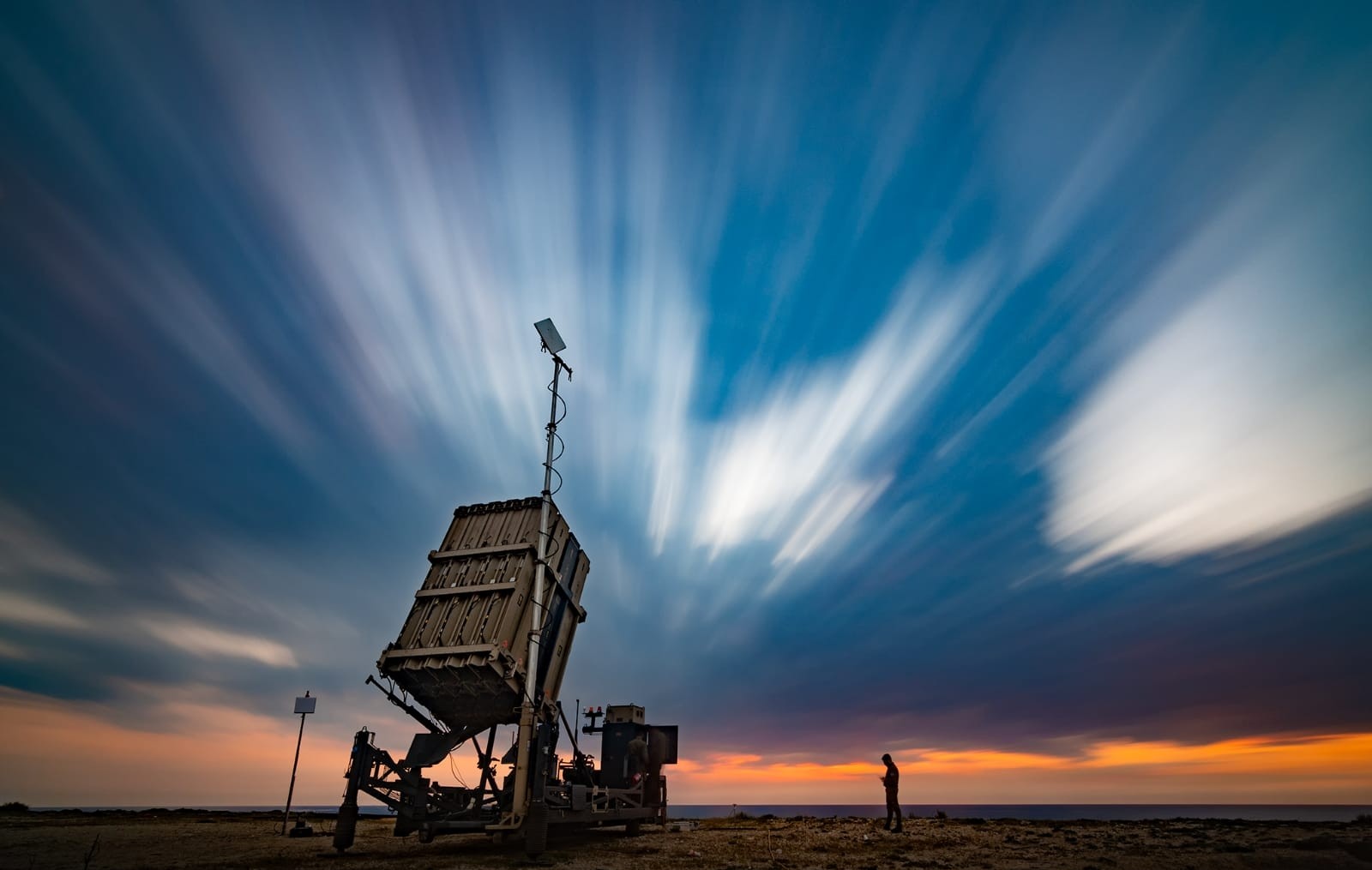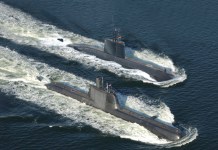Russia’s full-scale invasion of Ukraine in February 2022 has profoundly altered Europe’s security landscape, compelling frontline NATO states to reassess their defense strategies.
For Romania—a country that borders Ukraine, Moldova, and the Black Sea—the war has reinforced a long-standing belief: that credible deterrence must be matched by capable and modern air defense. Now, Romania is taking a bold leap in that direction.
In a landmark move, Romania has confirmed plans to acquire Israel’s Iron Dome system, becoming the first European country to integrate the combat-tested, short-range missile defense platform into its arsenal.
This strategic procurement is more than a technological upgrade—it’s a signal of Romania’s growing role in NATO’s eastern defense architecture and a defining step in its efforts to counter aerial threats in an increasingly volatile region.
A Strategic Milestone In National Defense
The announcement came directly from Romania’s new Defense Minister, Ionuț Moșteanu, who confirmed on national broadcaster TVR that a contract with Israel’s Rafael Advanced Defense Systems is expected to be signed by the fall.
Valued at over €2 billion (2.34 billion USD), the deal will deliver a comprehensive Very Short and Short Range Air Defense (VSHORAD/SHORAD) system, intended to plug a critical gap in Romania’s layered air defense network.
While Romania already fields US-made Patriot systems for medium- and long-range threats, it has lacked an effective counter to short-range projectiles, drones, and cruise missiles.
The Iron Dome system, which played an important role in defending Israeli cities during recent mass missile attacks from Iran, is widely recognized for its battlefield performance and rapid response capability.
According to Moșteanu, these are precisely the kinds of assets Romania urgently needs. “These are defensive missile systems we currently do not have, and we urgently need them,” he emphasized.

The contract follows a restricted tender launched by ‘Romtehnica’ – Romania’s military procurement agency, in 2023. Competing bids from Germany’s Diehl Defence (IRIS-T) and France’s MBDA (VL MICA, Mistral 3) were disqualified due to excessive cost, leaving Rafael’s Iron Dome-based offer as the only compliant submission.
While Rafael’s bid exceeded Romania’s original $1.9 billion budget, defense planners viewed the system’s performance, speed of deployment, and cost-effectiveness per intercept as worth the investment.
What Is Romania Getting?
Romania’s Iron Dome acquisition will include multiple batteries, each consisting of Tamir interceptor missiles, EL/M-2084 radar units, and advanced battle management systems.
Together, they create a tightly integrated solution capable of identifying, tracking, and neutralizing a wide spectrum of aerial threats—including drones, mortars, rockets, and cruise missiles—within seconds.
Crucially, the system is designed to engage only those threats projected to hit critical infrastructure or populated areas, thereby conserving interceptors and lowering operational costs.
The SPYDER variant offered to Romania is a dual-layer platform capable of firing both short-range Python-5 and medium-range Derby missiles, providing flexibility in diverse threat environments.
Each launcher can be mounted on mobile platforms, allowing for fast redeployment and point defense of high-value assets such as airbases, government buildings, or energy infrastructure—capabilities seen as vital given the unpredictable nature of today’s hybrid threats.
A Regional Defense Recalibration
Beyond its tactical benefits, the Iron Dome acquisition is part of a broader reconfiguration of Romania’s defense strategy. Faced with the ongoing war in Ukraine, the risk of conflict spillover, and increasing drone and missile activity near its borders, Romania is expanding and modernizing across multiple domains.
In 2025, nearly 30% of Romania’s defense budget will be directed toward procurement and modernization—a significant jump from pre-2022 levels. The Iron Dome package will be complemented by mobile SHORAD platforms and upgraded naval assets, including plans to acquire missile-equipped corvettes for Black Sea operations.
As Romania bolsters its defenses, it’s also playing a larger role in NATO’s evolving eastern posture. Bucharest hosts one of NATO’s newly established multinational battlegroups, and allied ISR (intelligence, surveillance, and reconnaissance) assets have increased in both Romania and neighboring Bulgaria.
Once operational, the Iron Dome will plug seamlessly into NATO’s integrated air and missile defense network, enhancing collective security across Southeastern Europe.
Iron Dome: A Tested Shield
Developed by Israel’s Rafael in partnership with Israel Aerospace Industries, Iron Dome is among the most combat-tested SHORAD systems globally. Since entering service in 2011, it has intercepted thousands of hostile projectiles with a success rate above 90%.
Each battery consists of three core components: the EL/M-2084 radar, a command-and-control system, and Tamir interceptor launchers, each capable of housing up to 20 missiles.
What makes Iron Dome unique is its ability to perform real-time threat assessments, deciding within seconds whether an incoming projectile poses a genuine threat to life or infrastructure.
If not, the system ignores it; if yes, it intercepts. This selectivity allows Iron Dome to deliver a high level of protection with relatively low operational cost.
Iron Dome’s mobility and modular design also give it a distinct advantage. It can be deployed in urban environments, on military bases, or moved closer to forward positions, all while maintaining rapid readiness.
Its integration with other systems like David’s Sling and Arrow makes it a core part of Israel’s multi-layered defense—an architecture Romania is now beginning to replicate.
Black Sea Frontline: Romania’s Strategic Outlook
The Iron Dome deal is inseparable from Romania’s broader Black Sea security strategy.
Since Russia’s annexation of Crimea in 2014, Bucharest has consistently warned that the Black Sea is a critical, yet underprotected, frontier for NATO.
The 2022 invasion of Ukraine validated Romania’s long-standing concerns, turning what was once dismissed as a peripheral theater into a central focus of NATO’s eastern defense.
Romania has since championed a stronger Allied presence in the region, both on land and at sea. NATO has responded by establishing new battlegroups, expanding aerial surveillance, and deploying advanced ISR capabilities. Still, challenges remain, particularly at sea.
A major complication is Türkiye’s control of the Bosporus and Dardanelles under the Montreux Convention, which limits the access of non–Black Sea navies.
While Romania has long advocated for a permanent NATO maritime presence in the region, Ankara’s restrictions have hampered this effort. That said, Türkiye’s recent enforcement of limitations on Russian naval movements has shown that its interests can sometimes align with broader Alliance goals.
“There is no Black Sea strategy without Turkey. It is the strongest,” Defense Minister Moșteanu acknowledged, highlighting the need for cooperation and pragmatism. Romania’s upcoming national defense strategy is expected to include a dedicated Black Sea policy—one focused on credible deterrence, allied coordination, and maritime security in a contested zone.
Romania: From Buffer Zone To NATO Pillar
Romania’s acquisition of the Iron Dome is far more than a tactical upgrade—it’s a symbol of its transformation from a peripheral NATO member into a key security provider on the Alliance’s south-eastern edge.
As regional threats evolve—from long-range missiles to kamikaze drones and hybrid tactics—Romania is betting on layered, smart defense solutions that are interoperable with allied systems and rapidly deployable across diverse terrains.
The Iron Dome marks the beginning of this shift. In the coming years, with increased investments in air, land, and naval capabilities, Romania aims to position itself not just as a recipient of NATO protection but as a frontline contributor to European security.
In a region where the line between peace and conflict is increasingly blurred, Romania’s forward-leaning posture sends a clear message: deterrence must be visible, credible, and ready, and Iron Dome is a critical piece of that equation.
- Shubhangi Palve is a defense and aerospace journalist. Before joining the EurAsian Times, she worked for ET Prime. She has over 15 years of extensive experience in the media industry, spanning print, electronic, and online domains.
- Contact the author at shubhapalve (at) gmail.com




